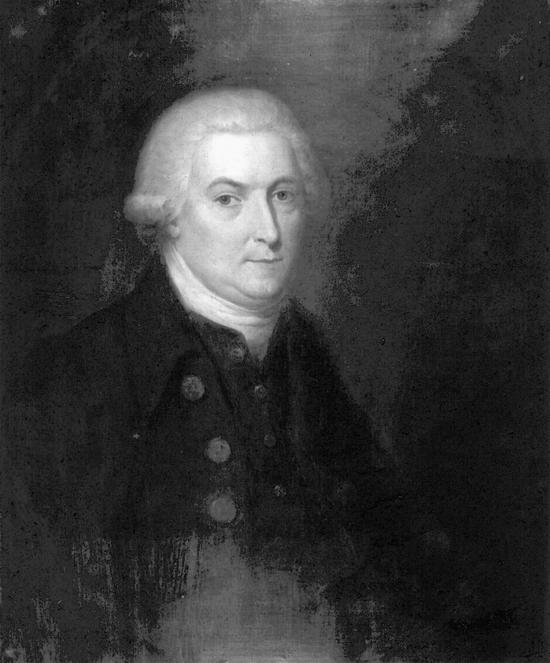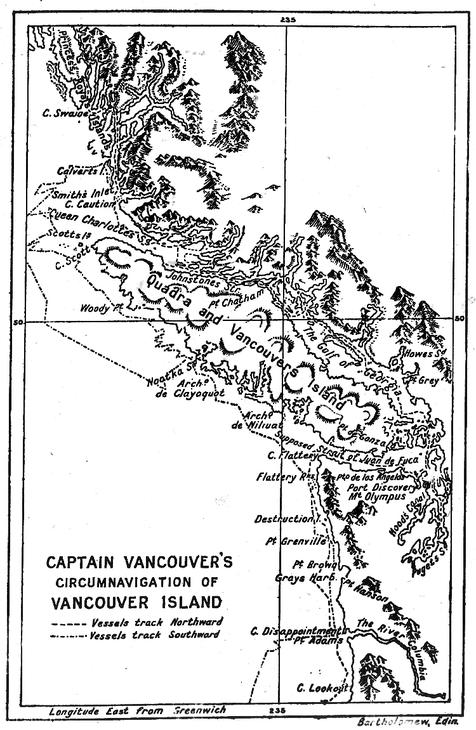Vancouver
Vancouver (49˚15'00" 123˚07'00" S of Burrard Inlet, E side of Str of Georgia), Vancouver Harbour (49˚18'00" 123˚06'00" Burrard Inlet, E of First Narrows). The RN officer who gave his name to BC’s largest city and made the first comprehensive charts of the coast of NW America led a surprisingly short and unhappy life. George Vancouver (1757–98) was born at King’s Lynn, Norfolk, and, as a young midshipman, joined Capt James Cook’s second (1772–75) and third (1776–80) voyages to the S Pacific and the Antarctic. In the 1780s, as a lt, he served in HMS Martin, Fame and Europa, mostly in the W Indies, and was recommended by Commodore Alan Gardner, cdr-in-chief at Jamaica, to be second-in-command of a new scientific expedition planned to the PNW, led by Capt Henry Roberts (see Roberts Bank). The voyage was postponed, Roberts reassigned and Vancouver, promoted to cdr, got the top job instead. He left England in Apr 1791 in HMS Discovery, together with the armed tender Chatham, under Lt William Broughton, and travelled via S Africa, Australia, NZ, Tahiti and Hawaii, arriving in BC waters in Apr 1792. That summer he and his crew made a detailed coastal survey from Puget Sd to Fitz Hugh Sd, meeting the Spanish explorers Dionisio Alcalá-Galiano and Cayetano Valdés en route and travelling with them part of the way. Before spending the winter in Hawaii, Vancouver joined Francisco de la Bodega y Quadra at Nootka to resolve details of the Nootka Sd Convention, a treaty designed to allow Britain access to the PNW and to secure the return of confiscated fur-trading vessels. He was not successful in this initiative but formed a useful friendship with the Spanish cdr. In the summer of 1793 he continued the coastal survey from Burke Channel to SE Alaska, using the ships’ boats to laboriously explore every inlet and passage, then charted the California coast to San Diego before spending a second winter in Hawaii. Vancouver completed his meticulous survey of the Alaska coast in 1794, travelling from W to E, and finally extinguished any lingering European hopes that a navigable passage might exist across N America. After another visit to Nootka Sd he sailed to Chile for repairs and then to England via Cape Horn and St Helena, arriving back in poor health, but raised in rank to capt, in Sept 1795. The expedition had been a great success (only one sailor died during the four-year trip), but Vancouver’s strict discipline, frequent illnesses and depressive temperament had caused dissent among his officers, and he was accused on his return of mistreating his crew. Conflicts with naturalist Archibald Menzies and midshipman Thomas Pitt, a deranged young nobleman who had been sent home from Hawaii, further damaged his reputation. From 1796 to 1798, helped by his brother John, Vancouver prepared the text for his Voyage of Discovery to the N Pacific Ocean and Around the World, which was published only months after his untimely death. The city of Vancouver, which pays to maintain the great explorer’s grave at St Peter’s, Petersham, in England, was named in 1886 at the suggestion of William van Horne, gen manager of the CPR. The area around the Hastings sawmill had been known earlier as Granville and Gastown; in 1911 the city’s boundaries were extended to include the townsite of Hastings, and in 1929 Vancouver amalgamated with the municipalities of South Vancouver and Point Grey. E W


